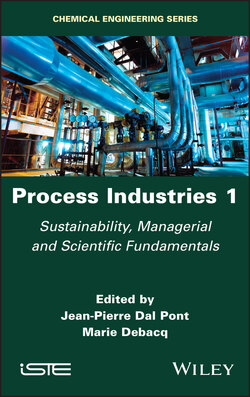Читать книгу Process Industries 1 - Группа авторов - Страница 17
1
Industries, Businesses and People
ОглавлениеA company, in the broadest sense, is the world of work, of employment. It transforms societies and landscapes through technological revolutions. Its modus operandi is complex and influenced by the political system, the cultures of the countries that host it, and the ways in which it is financed.
In what follows, we give a very brief description of the “upscale” enterprise of a developed country like France, using previous publications. Talking about the impact of the digital revolution on business requires a succinct description of what the latter is: this is what we have tried to do.
Behind the term “industry” is “industrious”, the quality of people who have the idea of producing material goods or products from raw materials that are processed for sale. At its core, it is deploying capital to seek gain, profit, and activity.
One to two million years ago, our distant ancestors had already discovered materials, including flint, a very hard rock, to make tools - extensions of the hand - and weapons (arrowheads, axes). Our ancestors, like today, sought to survive: we must eat and defend ourselves.
Let’s skip forward a century or two! During the Industrial Revolution, discussed in Chapter 5 of the second volume, handicraft was replaced by industry, characterized by raising capital, the use of machines that made use of the new energy, that is, steam, and men mostly gathered in factories. A century earlier, Colbert (1619-1683) had created a number of factories during the reign of the Sun King (King Louis XIV of France); it was a question of making manufactured products which were equivalent to products made by hand, although sometimes made using machines (looms).
Mechanization, mining, and capitalism, the history of which Joyce Appleby described in a masterful book (Appleby 2010), emerged during the Industrial Revolution. She defines capitalism as:
a system based on individual investments in the production of marketable goods.
At the end of the 19th Century, the following were developed: railways (the East Coast of the United States joined the West Coast in 1869, in Promontory, Utah), maritime transport, inventions that succeeded each other at high speed in all areas and led to the birth to the modern enterprise. The main stages of this evolution can be found in (Dal Pont 2012); to simplify, we will say that the enterprise in which we are interested and which we will describe as modern descends from the manufacturing company of the end of the 19th Century.
The company is a source of wealth, synonymous with employment. Wealth is created in the workshop; this is the thesis defended by Adam Smith (1723-1790), British and founder of modern economics in his 1776 work, The Wealth of Nations.
In what follows, we will distinguish three main classes of companies.
